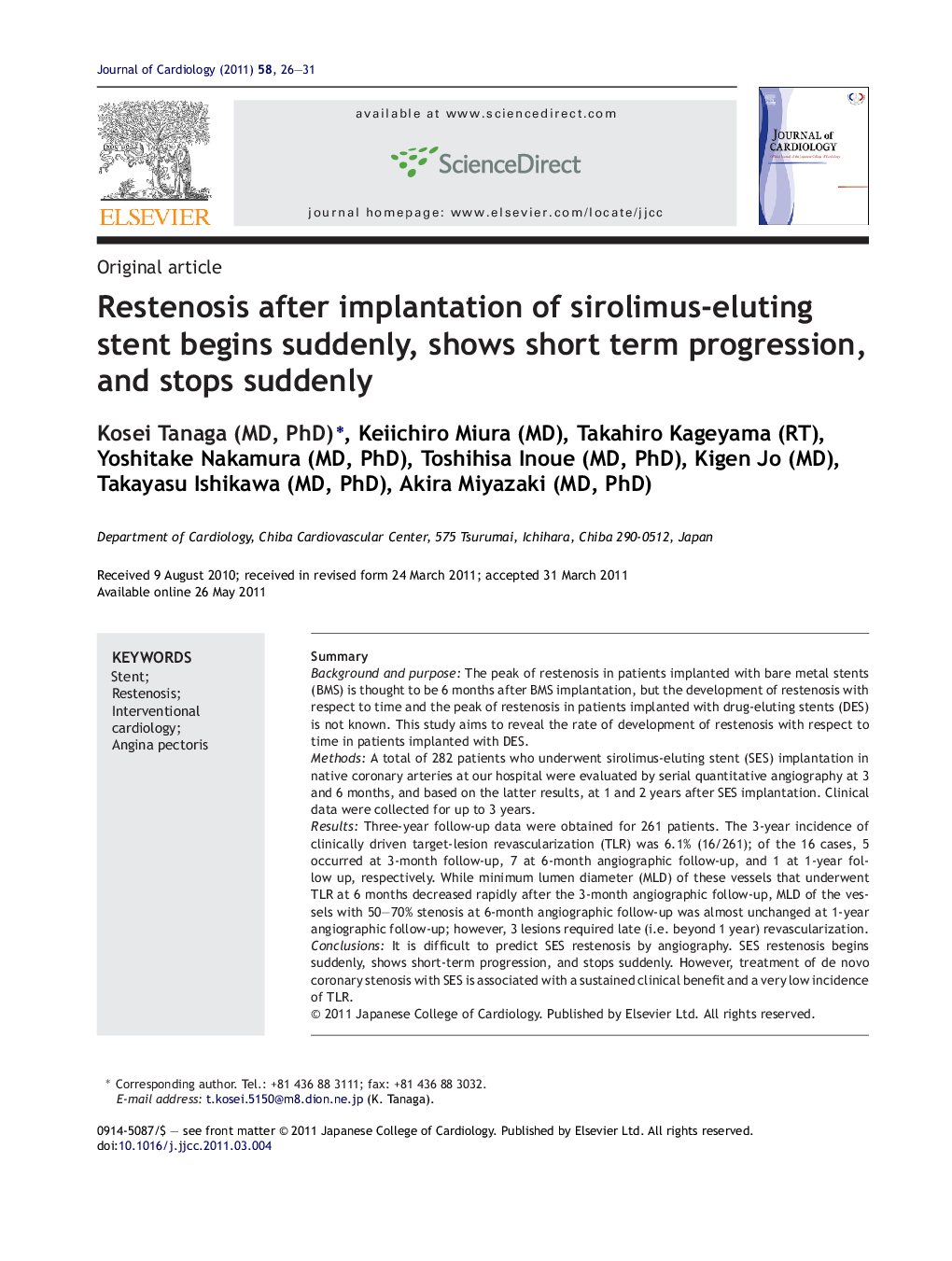| Article ID | Journal | Published Year | Pages | File Type |
|---|---|---|---|---|
| 2963389 | Journal of Cardiology | 2011 | 6 Pages |
SummaryBackground and purposeThe peak of restenosis in patients implanted with bare metal stents (BMS) is thought to be 6 months after BMS implantation, but the development of restenosis with respect to time and the peak of restenosis in patients implanted with drug-eluting stents (DES) is not known. This study aims to reveal the rate of development of restenosis with respect to time in patients implanted with DES.MethodsA total of 282 patients who underwent sirolimus-eluting stent (SES) implantation in native coronary arteries at our hospital were evaluated by serial quantitative angiography at 3 and 6 months, and based on the latter results, at 1 and 2 years after SES implantation. Clinical data were collected for up to 3 years.ResultsThree-year follow-up data were obtained for 261 patients. The 3-year incidence of clinically driven target-lesion revascularization (TLR) was 6.1% (16/261); of the 16 cases, 5 occurred at 3-month follow-up, 7 at 6-month angiographic follow-up, and 1 at 1-year follow up, respectively. While minimum lumen diameter (MLD) of these vessels that underwent TLR at 6 months decreased rapidly after the 3-month angiographic follow-up, MLD of the vessels with 50–70% stenosis at 6-month angiographic follow-up was almost unchanged at 1-year angiographic follow-up; however, 3 lesions required late (i.e. beyond 1 year) revascularization.ConclusionsIt is difficult to predict SES restenosis by angiography. SES restenosis begins suddenly, shows short-term progression, and stops suddenly. However, treatment of de novo coronary stenosis with SES is associated with a sustained clinical benefit and a very low incidence of TLR.
